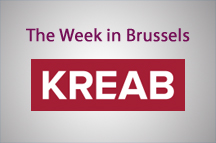 President Jean-Claude Juncker presented his contribution to the upcoming Rome Summit, taking place later in March and marking the 60th anniversary of the EU. It is a White Paper on the future of Europe, introducing five alternative scenarios for how the EU could develop. As the Commission’s press release states, the paper “offers a glimpse into the potential state of the Union by 2025 depending on the choices Europe will make”. The paper deliberately does not present a binary choice, which it characterizes as simplistic and misleading.
President Jean-Claude Juncker presented his contribution to the upcoming Rome Summit, taking place later in March and marking the 60th anniversary of the EU. It is a White Paper on the future of Europe, introducing five alternative scenarios for how the EU could develop. As the Commission’s press release states, the paper “offers a glimpse into the potential state of the Union by 2025 depending on the choices Europe will make”. The paper deliberately does not present a binary choice, which it characterizes as simplistic and misleading.
So was Mr Juncker, or one of his advisors, looking out of a Berlaymont window when they came up with the idea of presenting different options? Rond Point Schuman, just outside, is a roundabout that presents you with five alternative directions. Six if you count going all the way around it to head back to where you came from. However, reverting back to a European Economic Community with Six Member states was not on the table - he didn’t go that far. The closest he comes to that is his second scenario - Nothing but the Single Market. It is probably not his preferred outcome. The only advantage the Commission can see in this option is that decision making would be simpler to understand, but it warns that the capacity to act collectively would be limited, citizens rights may become restricted over time, and new emerging issues would need to be solved bilaterally.
Perhaps only slightly more palatable an option to Juncker is the first one - carrying on. Here he foresees strengthening of the single market and incremental progress on improving the single currency, further steps to ensure the sustainability of public finances, a stepping up in the fight against terrorism, deepening of defense cooperation and more unity on foreign policy, and positively shaping the global agenda on climate change and sustainable development, etc. The danger is that the current strains on the Union continue to grow and that ultimately we see more fragmentation.
 Other options are the fourth one, doing less more efficiently and the fifth one, doing much more together. The third scenario, those who want more do more, has caused consternation amongst a number of member states. The proposition here is essentially a multi-speed Europe. The fear amongst those that are not totally sold on the idea of deeper integration, or that are not ready for it, is that they will become marginalized and will lose influence, also in the areas where they do wish to participate.
Other options are the fourth one, doing less more efficiently and the fifth one, doing much more together. The third scenario, those who want more do more, has caused consternation amongst a number of member states. The proposition here is essentially a multi-speed Europe. The fear amongst those that are not totally sold on the idea of deeper integration, or that are not ready for it, is that they will become marginalized and will lose influence, also in the areas where they do wish to participate.
Now the Member States and the Parliament, and others, will discuss the White Paper and the various scenarios presented by President Juncker. The EU’s challenge perhaps in this process is that there is a need and even a hunger for direction, yet nobody is very happy to see someone else take the wheel. The risk then is that one sits at the entrance to Rond Point Schuman and goes nowhere.












